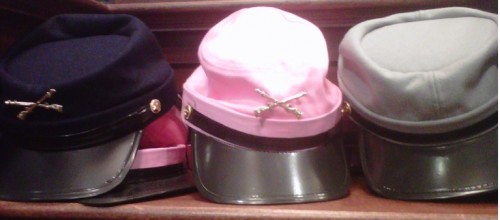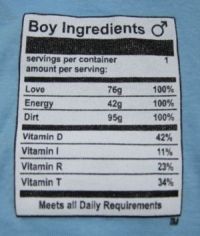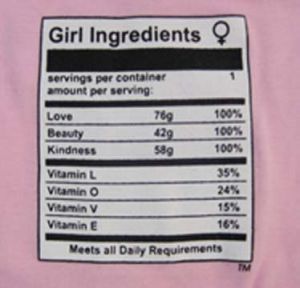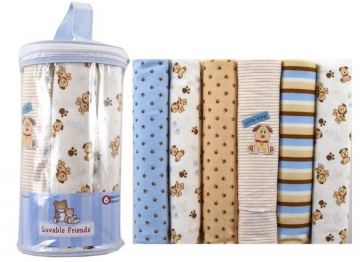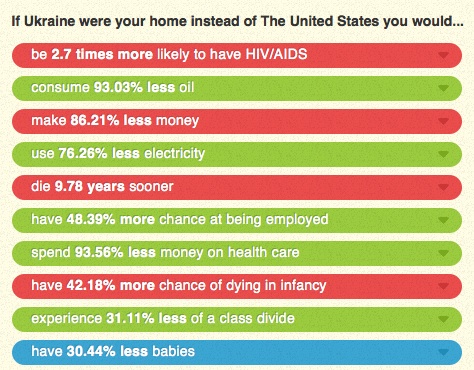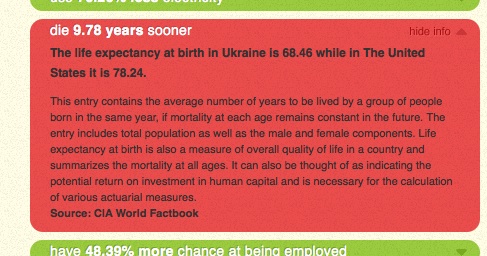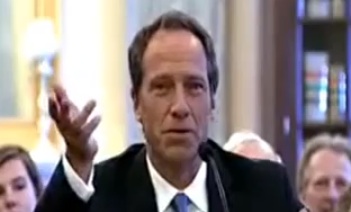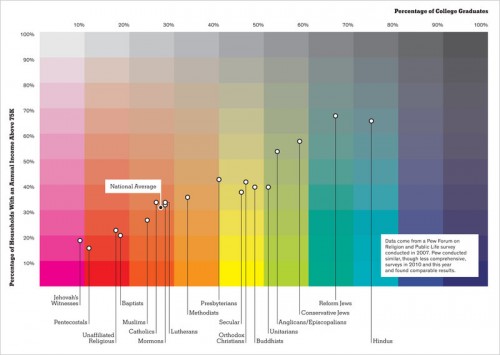We’re trying to get our inbox under control, so I decided it was time for another of my occasional round-ups of gendered kids’ items, so here you go. My favorite example was an ad from a flyer for Save On Foods in Victoria, Canada, sent in by Joanna M. The advertised products are boysz and girlsz inhalers, for all your gendered breathing needs. The boyz’ version is in green and gray with a graphic of a skateboarder, while the girlz’ inhaler is, of course pink, with a flower:
Amanda K.H. took this photo of 3 kid-sized Civil War hats for sale at the Abraham Lincoln Presidential Museum in Springfield, IL. In addition to the Union blue and the Confederate gray, there was a pink version:
The Pragmatist let us know about onesies for sale at Mommy and Kids Allure Boutique. The onesies include lists of “ingredients” for boys and girls. What are boys made of? Love, energy, and dirt:
For girls, it’s love, beauty, and kindness:
Elliott M. noticed that the Garanimals website doesn’t just just divide the clothing into boys’ and girls’ sections, but uses gendered language to describe them. The boys’ clothing is described with active language (“ready, set, go!”), and they’ll look “cool”. Girls, on the other hand, are “sugar and spice, everything nice” and a “princess,” and they’ll be “looking great and feeling better,” “cute,” “eye catching,” and “adorable”:
An anonymous reader saw these sets of stickers, divided into themes for boys and girls:
What are boy themes? Space, travel/transportation, dinosaurs, sports, and pirates, among others. Girls, on the other hand, are associated with stars, flowers, butterflies, clothes, makeup, personal hygiene, cheerleading, and shopping. Since the reader was buying them to give out to a Girl Guide group (equivalent to Girl Scouts in the U.S.) for badges about science, being active, and personal hygiene, she had to buy both sets.
Finally, Sarah M. sent in a photo she took at Target of two toys that define boys by what they do and girls by what they are. The toys are those types of little sit-and-scoot toy cars kids push around with their feet. The boys’ version is red and is, appropriately, called a Lil’ Fire Truck Ride-On. The pink version, on the other hand, is the Lil’ Princess Ride-On — because apparently there’s no appropriate vehicle to define as “girly,” so the easiest way to gender the toy was just to call it a thing for princesses and be done with it:
UPDATE: Philip Cohen pointed out another example on his blog, Family Inequality. Baby blankets at Amazon were available in blue for the “little man” and pink for the “little cupcake,” in case your baked goods are cold:


